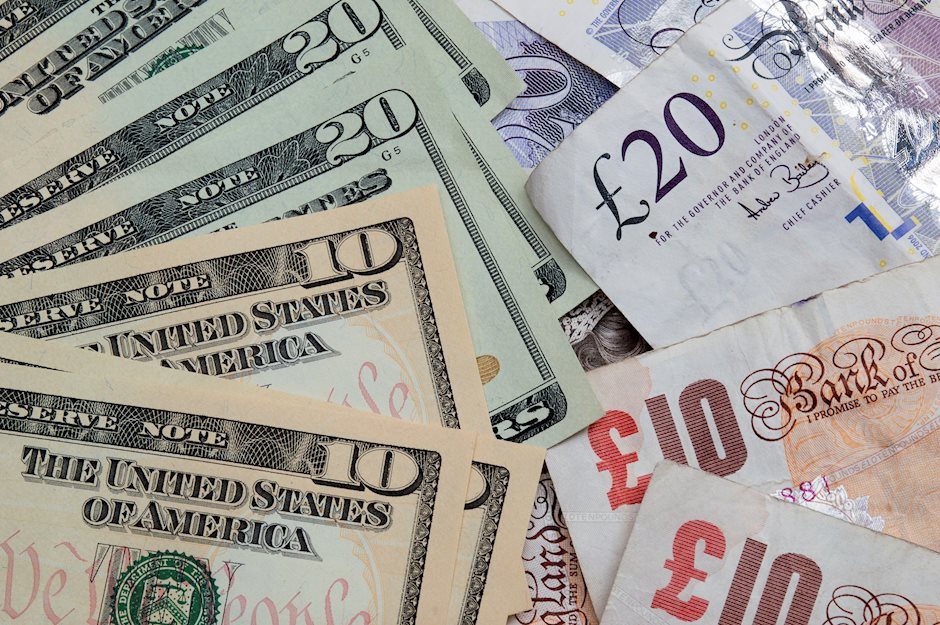GBP/USD edges higher to 1.2630, looks to UK/US PMIs for some impetus
- GBP/USD attracts some dip-buyers on Monday, though the uptick lacks bullish conviction.
- Traders now seem reluctant to place directional bets ahead of the Fed/BoE policy meetings.
- This week’s key macro data from the UK and the US should contribute to infusing volatility.

The GBP/USD pair ticks higher at the start of a busy week and for now, seems to have snapped a three-day losing streak to the 1.2600 neighborhood, or over a two-week low touched on Friday. Spot prices currency trade around the 1.2630-1.2635 region, up 0.10% for the day, though any meaningful appreciation seems elusive ahead of this week's key central bank event risks.
The Federal Reserve (Fed) is scheduled to announce its policy decision on Wednesday, which will be followed by the Bank of England (BoE) meeting on Thursday. The US central bank is widely expected to lower borrowing costs for the third straight meeting, though traders are pricing in the possibility of a slower pace of rate reductions next year. Hence, the accompanying policy statement, the updated economic projections – including the so-called dot-plot – and Fed chair Jerome Powell's comments at the post-meeting press conference will be scrutinized for cues about the future rate-cut path. This, in turn, will play a key role in influencing the near-term US Dollar (USD) price dynamics and provide some impetus to the GBP/USD pair.
Meanwhile, the UK central bank is anticipated to maintain the status quo and leave interest rates unchanged. Moreover, the BoE has stressed it is taking a gradual approach to cutting interest rates amid rising inflation expectations. In fact, the BoE and other forecasting bodies expect that inflation will rise next year in the wake of UK finance minister Rachel Reeves' big-spending budget. That said, BoE Governor Andrew Bailey's dovish outlook, signaling four interest rate cuts in 2025, might hold back traders from placing aggressive bullish bets around the British Pound (GBP) and act as a headwind for the GBP/USD pair. This, in turn, warrants some caution before confirming that spot prices have bottomed out around the 1.2600 mark.
Investors this week will also confront the release of important macro data from the UK and US, starting with the flash PMI prints later this Monday. Apart from this, the UK monthly employment details, along with the US Retail Sales on Tuesday, followed by the UK consumer inflation figures on Wednesday, the final US GDP print on Thursday and the UK Retail Sales on Friday should infuse volatility around the GBP/USD pair.
Economic Indicator
S&P Global/CIPS Composite PMI
The Composite Purchasing Managers Index (PMI), released on a monthly basis by the Chartered Institute of Procurement & Supply and S&P Global, is a leading indicator gauging private-business activity in UK for both the manufacturing and services sectors. The data is derived from surveys to senior executives. Each response is weighted according to the size of the company and its contribution to total manufacturing or services output accounted for by the sub-sector to which that company belongs. Survey responses reflect the change, if any, in the current month compared to the previous month and can anticipate changing trends in official data series such as Gross Domestic Product (GDP), industrial production, employment and inflation.The index varies between 0 and 100, with levels of 50.0 signaling no change over the previous month. A reading above 50 indicates that the UK private economy is generally expanding, a bullish sign for the Pound Sterling (GBP). Meanwhile, a reading below 50 signals that activity is generally declining, which is seen as bearish for GBP.
Read more.Next release: Mon Dec 16, 2024 09:30 (Prel)
Frequency: Monthly
Consensus: -
Previous: 50.5
Source: S&P Global
Author

Haresh Menghani
FXStreet
Haresh Menghani is a detail-oriented professional with 10+ years of extensive experience in analysing the global financial markets.
















